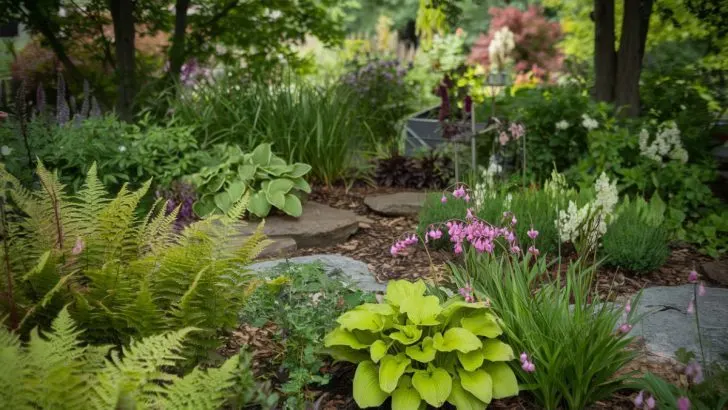Many gardeners dream of vibrant gardens, but what if your yard is more shade than sun? The good news is shade doesn’t mean sacrificing color or beauty. In fact, it can be an opportunity to cultivate a serene haven with plants that thrive without the need for constant sunlight.
Shade gardens offer a unique challenge, but with the right selection, you can enjoy a lush array of perennials that dazzle year after year.
Shade-loving perennials bring texture, varying shades of green, and unexpected bursts of color to your garden. They not only survive but thrive in low-light conditions, transforming those overlooked corners into highlights of your landscape.
These plants are resilient and less demanding, reducing the need for constant attention while continuing to flourish season after season.
Understanding the characteristics of perennials suited for shade can revitalize your approach to gardening. These plants are not just placeholders; they add structure and style, providing interest throughout the year. Let’s explore the top ten perennials that will turn your dim spots into thriving shade gardens.
1. Hosta: The Hardy Hero
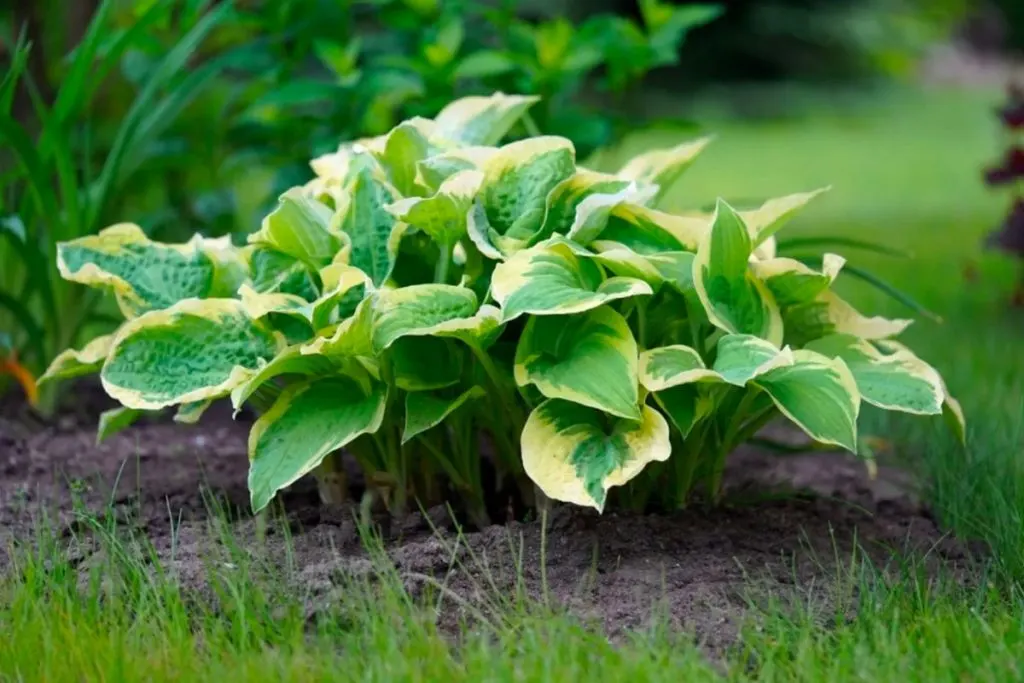
Hostas are celebrated for their robust nature and endless varieties. Known for their striking foliage, they bring texture and color to shady areas. From deep blue-green to variegated white and green leaves, there’s a hosta for almost every taste.
Maintenance Tip: While hostas are low-maintenance, watch out for slugs and snails, which can nibble on their leaves. A simple solution is to sprinkle crushed eggshells around the base to deter these pests.
Hostas not only fill space but can also act as an attractive backdrop for more colorful blooms. Their lush leaves can add volume to your garden, making it look fuller and more vibrant.
2. Astilbe: The Colorful Feather
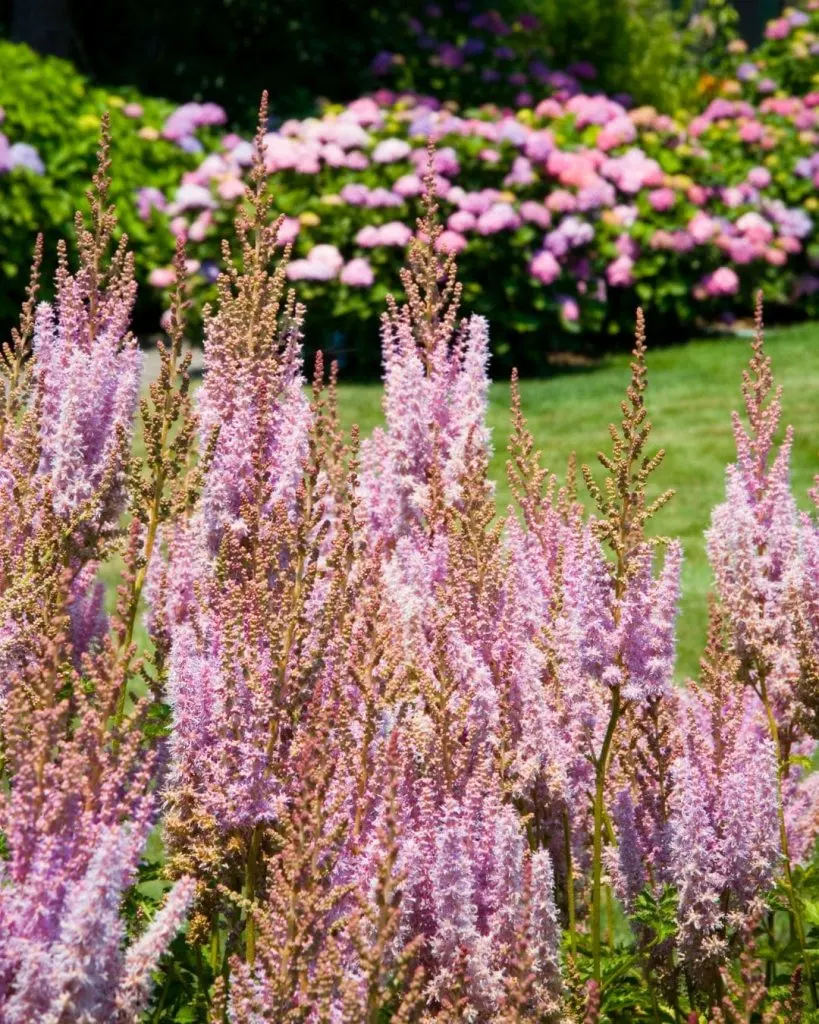
Astilbes add a splash of color with their plume-like flowers, ranging from pinks and purples to reds and whites. They thrive in shaded, moist environments and are perfect for adding vertical interest.
Tip for Success: Ensure the soil remains consistently moist; astilbes dislike drying out. Mulching can help retain soil moisture and keep the plants happy throughout hot spells.
Their feathery blooms make astilbes a favorite for pollinators like bees, which can add a lively buzz to your garden.
3. Heuchera: The Versatile Beauty
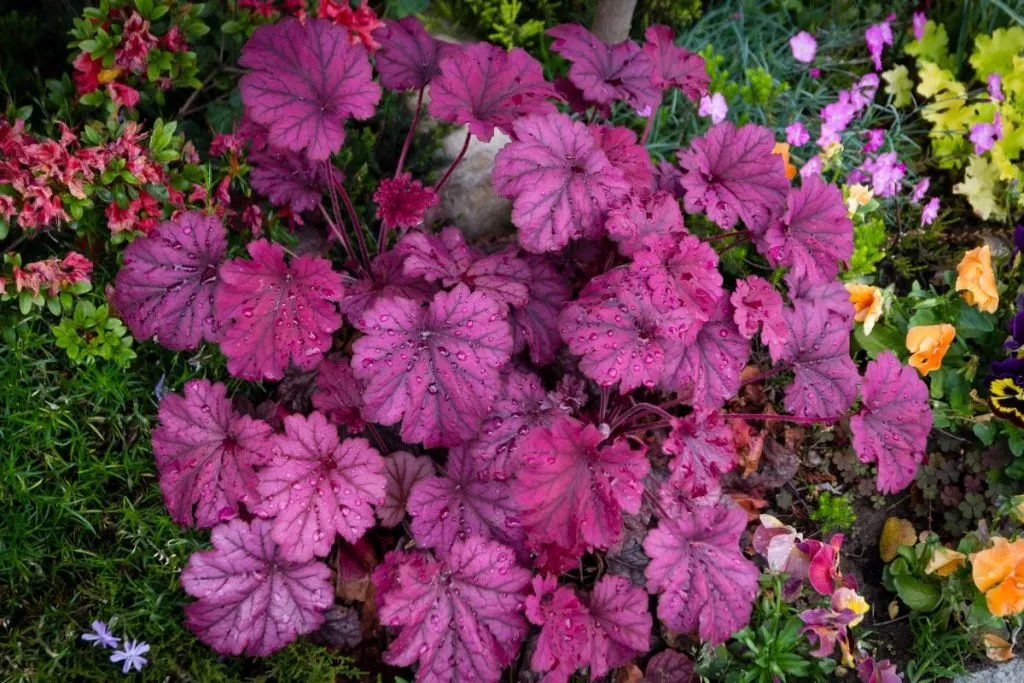
Also known as coral bells, heucheras offer stunning foliage in an array of shades—peach, purple, bronze, and lime. Their adaptability makes them a chic choice for those tricky-to-fill spots.
Design Idea: Try mixing different heuchera varieties to create a tapestry of color and texture within your garden. They’re also excellent for edging paths or as container plants.
Aside from being visually appealing, they are also drought tolerant once established, making them practical and beautiful additions to any garden.
4. Ferns: The Woodland Classic
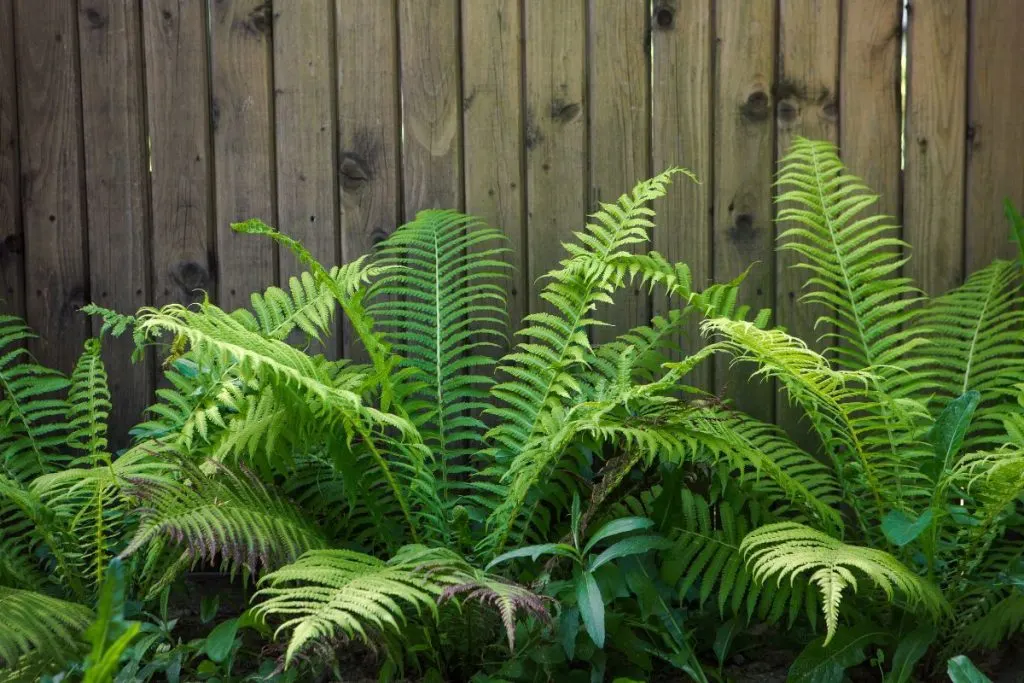
Ferns bring a classic, woodland feel to shade gardens with their delicate, lacey foliage. They thrive in lower-light conditions and add a fine texture that complements other plants.
Fact to Consider: Many ferns prefer acidic soil, so consider a soil test if they’re not thriving as you’d hoped.
Their unfurling fronds in the spring are a lovely sight, heralding new growth and adding movement to the garden.
5. Bleeding Heart: The Romantic Favorite
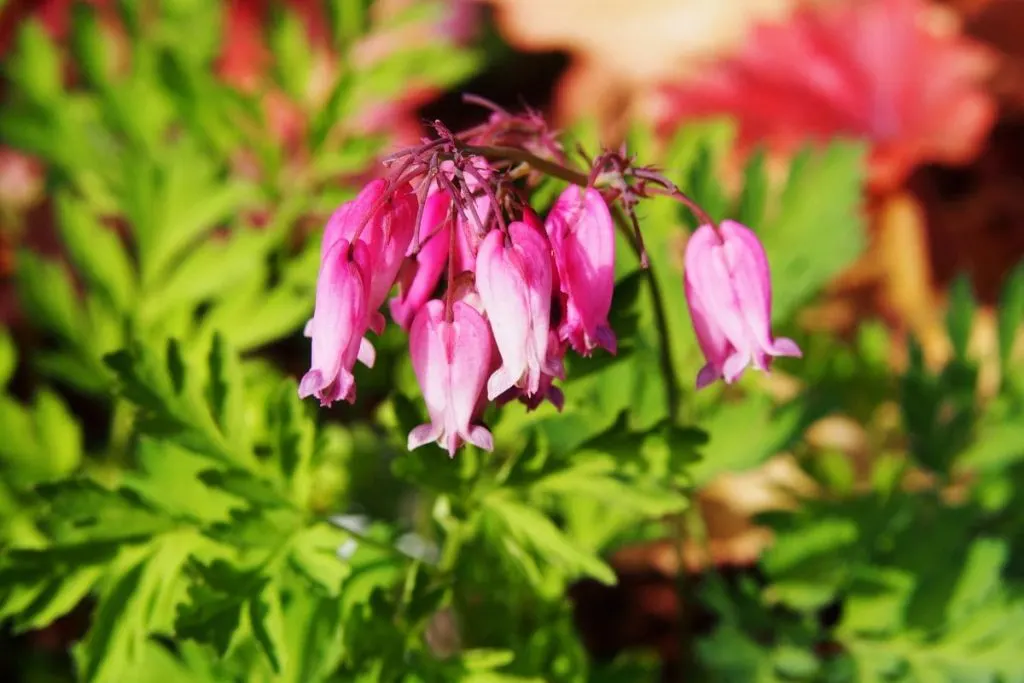
With its heart-shaped blooms, the bleeding heart is a show-stopper. These plants offer a classic charm with their pink or white flowers that gently droop from arching stems.
Planting Advice: Bleeding hearts prefer cool, moist areas, making them ideal for shaded spots that receive dappled sunlight.
They bloom in the spring and early summer, providing an early hit of color that can be paired with later-blooming plants for extended interest.
6. Pulmonaria: The Lungwort Marvel

Pulmonaria, or lungwort, is known for its spotted leaves and clusters of blue, pink, or white flowers. As one of the first perennials to bloom in spring, it brings life to your garden early in the season.
Growing Insight: Pulmonaria prefers a cool, moist environment and benefits from regular watering during dry spells.
The foliage is evergreen in many climates, providing year-round interest even after the flower show is over.
7. Brunnera: The Siberian Delight

Brunnera, often called Siberian bugloss, charms with its heart-shaped leaves and delicate, forget-me-not-like flowers. Loved for its shade tolerance and beautiful silver-patterned foliage, it works well as ground cover.
Garden Tip: Keep Brunnera’s soil consistently moist and well-drained to avoid leaf burn and ensure healthy growth.
Its long-lasting foliage makes it a staple in the garden even when it’s not blooming, offering a textural contrast to other plants.
8. Tiarella: The Woodland Gem
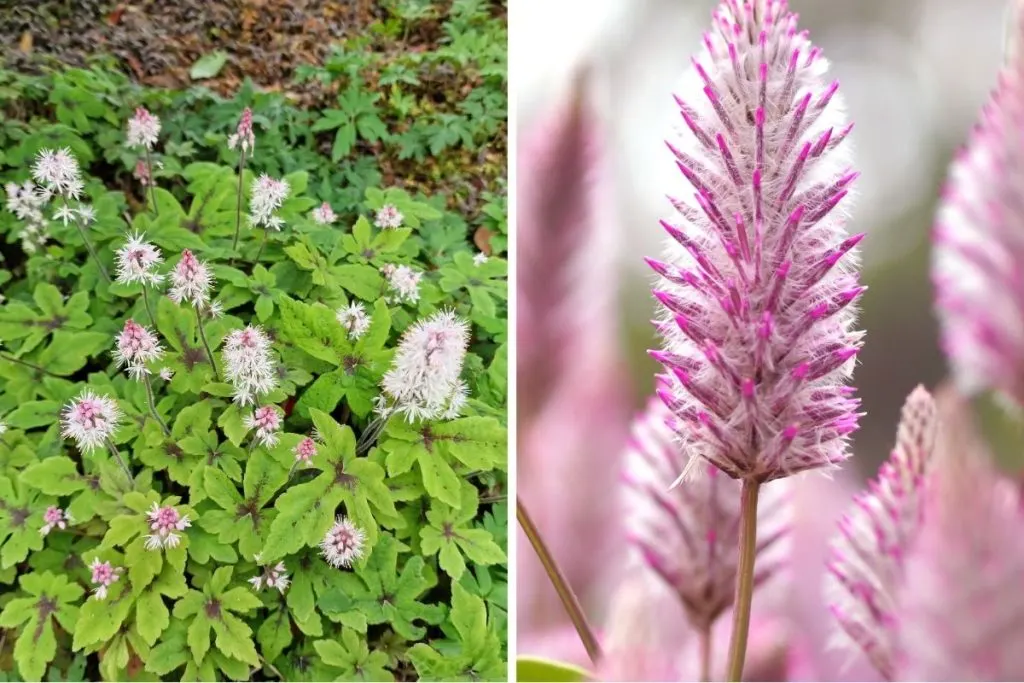
Tiarellas, or foamflowers, delight with intricate leaf patterns and white to pink blooms that resemble tiny fountains. These perennials are excellent for ground cover or in borders.
Caring Suggestion: Tiarellas prefer a rich, well-draining soil to maintain their vitality throughout the seasons.
These plants are particularly favored in woodland gardens where their natural habitat conditions—a cool, shady spot—are mimicked.
9. Lamium: The Silver Carpet
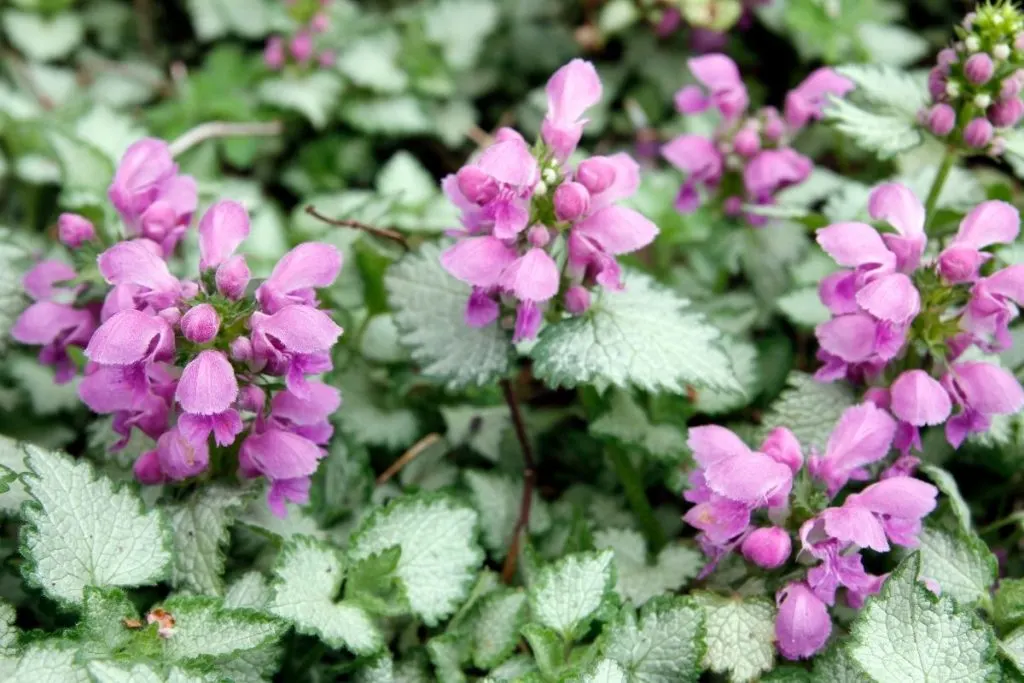
Lamiums are renowned for their silver-variegated leaves and clusters of pink, purple, or white flowers. They’re robust ground covers that excel in shadier areas.
Note for Enthusiasts: Watch for overgrowth; lamium can spread quickly. Regular trimming keeps it in check and looking tidy.
Their ability to quickly cover the ground makes them a perfect choice for filling bare patches and suppressing weeds.
10. Ligularia: The Bold Statement
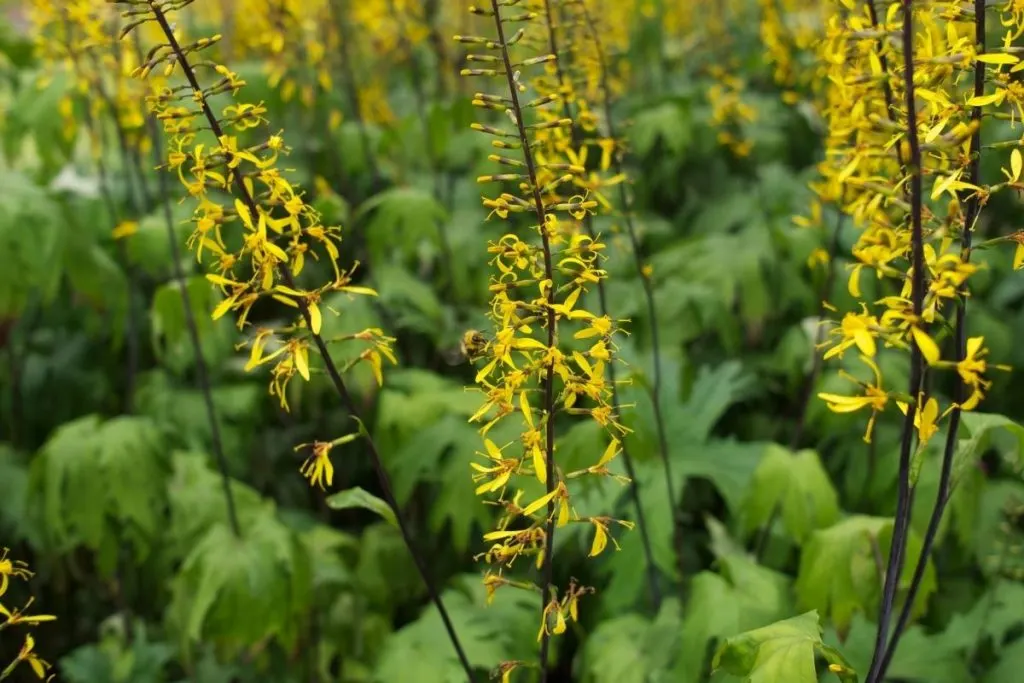
Ligularia stands out with large, bold leaves and striking yellow or orange flowers that appear in late summer. These plants thrive in part to full shade, given they have adequate moisture.
Important Care Tip: Ligularia appreciates consistently moist soil and can suffer in drought conditions, so ensure a regular watering schedule.
Their architectural presence can provide a dramatic backdrop in your garden, making them a must-have for adding height and contrast.
Bringing It All Together

Creating a shade garden is not just about filling space; it’s an art form that blends structure, color, and texture. The perennials discussed are champions of low-light gardens, each bringing something unique to the party. By thoughtfully selecting and combining these plants, you can craft a sanctuary of tranquility and beauty in those often overlooked shady spots.
These perennial choices invite you to reimagine shade as an asset rather than a challenge. Experiment with combinations, and you’ll find that these plants not only survive, they thrive—adding grace and resilience to your outdoor spaces.
Ready to transform your garden? Don’t let the shade hold you back—embrace it and watch your garden flourish.

